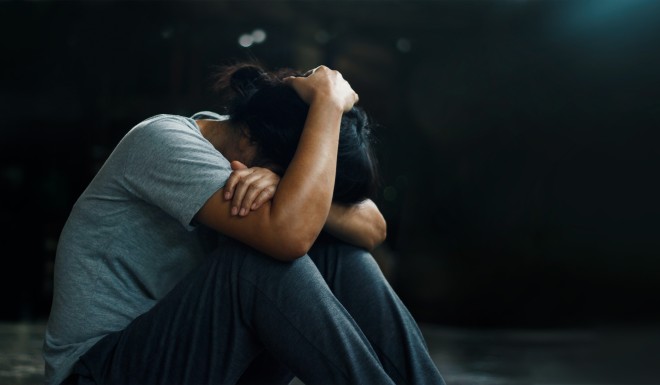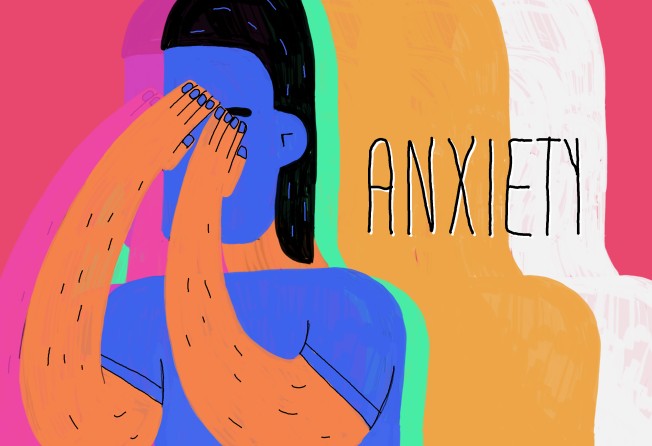
Anxiety can be overwhelming and affect your physical as well as mental health - but you can take back control
Worries are a natural part of life, but if they start to interfere in your everyday existence, it may be time to tackle them head on

There's so much our bodies do to ensure our survival without our being aware. One of the ways they act without our instruction is when we are faced with danger. Anxiety is the name given to describe our physical reactions if we encounter something that appears to be a threat. When this happens, our bodies will prepare themselves to run or fight, also known as “fight or flight”.
In fight or flight mode, what we feel and how our bodies physically react is known as anxiety. Anxiety can be helpful, as it triggers bodily systems to prepare for action. In the face of danger, our breathing speeds up, giving more oxygen to our muscles so we can fight if we have to, or run as fast as we can away from the danger. For similar reasons, our heart rate speeds up, and blood is prioritised to our large muscles. Stress hormones are released, which will help us get ready for action. Our muscles tense, and we sweat more, to keep our bodies cool and ready for action. Digestion and other bodily functions that are not important in this moment are put on hold, and our mind becomes fixated on the source of the threat.
So far, this preparation sounds great. Our bodies are in optimal position to flee or to fight, and we’ve not even had to consciously put any work in. However, sometimes what we think of as a threat to us … just isn’t. In the modern world, we don’t often come across people or animals who we have to run away from or physically defend ourselves against, and yet our bodies’ natural response to perceived threat is exactly the same as its response to actual threat.
Our brains (especially the amygdala and the hippocampus) have not evolved to tell the difference between actual threats – for example, “If I don’t do something this sabre tooth tiger will eat me” – and perceived threats – something like “If I don’t pass this exam my whole life is ruined”. Although these examples are a bit ridiculous, they illustrate how our physical reactions to perceived threats can create a problem.
As our brains can’t tell the difference between actual and perceived threats, the automatic responses in our bodies will be set off regardless of whether they need to be. This is why we might feel breathless, dizzy or light-headed all of a sudden in certain situations, as the fight or flight response increases our breathing rate. Feeling nauseous, looking pale, and feeling clammy or sweaty are other examples of how anxiety can become a problem for us, if we are not needing to actually run away or fight.
Case study
Erin* often experienced shortness of breath, palpitations and erratic thinking. Anxiety also affected Erin’s sleep, making it difficult for her to get enough rest, and this in turn led to her being more and more tired during the day. Erin’s anxiety had several root causes. It had started, she believed, when she had been involved in a car crash when she was 11 years old. Although the danger had long past, Erin explained that she sometimes had flashbacks, and had recently been diagnosed with Post Traumatic Stress Disorder. When she had a flashback, her mind would replay the scene from the accident, and Erin would feel like she was back in that moment, in imminent danger. She found she could get "stuck" in the scene, and be unable to pull herself back to reality. Her breathing would become shallow and quick, she would get hot and dizzy, and would always feel very frightened when experiencing a flashback.

*name has been changed.
Fix it
Anxiety can come in many forms, and is something people of all ages and backgrounds can experience. While symptoms may be more or less extreme than Erin’s, if you feel anxiety is having a negative effect on you, see how the steps Erin worked through may be helpful for you:
1. And ... breathe
Remember how the anxiety response increases our breathing rate? This can lead to dizziness, and starts a vicious cycle of making us feel even more anxious. The key to breaking this cycle is to take some control back, starting with the breath, which has the added bonus of activating our internal soothing systems. Practise the following exercises when you are not feeling anxious, and then you will be able to pull out the techniques when you most need them.
- Basic counting method: breathe in through your nose, and silently count to three. Pause for one beat, then slowing count one-two-three as you exhale. Over time, you can increase the count, helping you to breathe slower, deeper, and with more control.
- Place one hand on your chest, and one on your belly. If your chest rises and falls more than your stomach, then this shows shallow breathing, and is common with people who experience anxiety. See if you can direct the breath to your stomach first, and see this hand rise as you inhale. Close your eyes, and practise some belly breathing. Over time, this will help you breathe deeper and achieve a more relaxed state of mind.
- Practise counting and belly breathing at the same time, making sure you are in a relaxed position, with your face muscles unclenched, and your body at ease.
As with any skill, learning how to relax and calm anxiety takes time, and practice. Erin decided to set aside some time every day to do these exercises, and with time she saw an improvement in the way she was able to handle her anxiety.
2. Get grounded
Grounding can help people stay present in the moment, and can help manage overwhelming feelings. For Erin, this was really helpful especially when she was experiencing a flashback.
- Breathe deeply and slowly, as practised in the exercises above.
- Look around the room you’re in, or space you’re in at the moment, and silently name five things you can see.
- Name four things you can feel (eg my feet on the floor, the breeze on my face).
- Name three things you can hear right now.
- Name two things you can smell (or two things you like the smell of).
- Name one good thing about yourself.
Other ways to “ground” yourself in the moment might be to call a friend, have a warm bath or shower and notice the sensations of the water; look outside and take note of how many trees you see, or how many cars you see of a particular colour.
3. Put it on paper
Or on your phone, or computer, tablet … however you like to write, try writing things down and see if this helps you “let things go”.

4. Delay it
It’s natural to have worries, but sometimes these can intrude on every aspect our lives. Erin started a “Worry Pad”, where she noted down her worries when they popped up. She then made an agreement with herself to put off worrying about the issue until later in the day, say 6pm (or another time). While this didn’t stop the same issue from popping up in her mind throughout the day, she was able to choose not to engage with the thought, knowing that she would address it later. This method can be really helpful for people who find they ruminate on certain issues.
5. Work those muscles
As discussed earlier, anxiety can affect us physically as well as mentally, as our bodies prepare themselves for fight or flight. A technique helpful for releasing muscle tension brought on by anxiety is Progressive Muscle Relaxation:
- Starting with the muscles in your face, and working your way down.
- Tense each muscle group for five seconds.
- Relax the muscle for 10 seconds.
- Notice how you feel when your muscles are tense, and when they’re relaxed.
- Repeat tensing and relaxing for all your muscle groups, working your way down your body.
Erin enjoyed this practice just before going to bed, and discovered it was a helpful way to relax not only her body, but also her mind. When she was able to conduct a full body scan, and relax tension where she felt it, she enjoyed a good night’s sleep and felt much calmer.
This article was curated by Young Post.